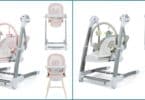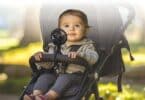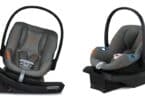Button batteries are used in many consumer products from greeting cards and watches to small appliances and children’s toys. Over the past few years safety groups have issued warnings about the batteries, cautioning parents about how incredibly dangerous they are if ingested.
If a button battery gets stuck in a child’s throat or gullet this can trigger the electrical charge they carry and can burn a hole through the throat and lead to serious internal bleeding and death.
One Oklahoma family is working to raise awareness about the dangers of button batteries after their two-year-old daughter swallowed one over the Christmas holidays and passed away a short time later.
Last Sunday when Brianna Florer’s skin unexpectedly turned blue, and she started to throw up blood, her family immediately rushed her to the hospital.
Grandfather Kent Vice told Tulsa World: “On Saturday she was fine. It was a perfect Christmas.”
The situation, however, turned dire very quickly.
Once doctors determined the toddler had swallowed a small button battery she was immediately transferred to another hospital for surgery.
But sadly the little girl passed away when doctors couldn’t stop the bleeding.
“They operated on her for 2½ hours, but they couldn’t stop the bleeding,” Vice said. “They believed the battery ate through to her carotid artery by way of her esophagus. One minute she is perfect, and the next minute she is dead. We had no idea when she swallowed it (the battery).”
The state medical examiner’s office said Brianna’s autopsy is pending, and it would be two to four months before an official cause and manner of death is known.
The family has set up a Go Fund Me account to help with funeral expenses – https://www.gofundme.com/xwgrfwfg .
One family that knows, all too well, the havoc a button battery can have on a child’s system is the Rauch family.
At five-years-old, their son Emmett has endured 65 surgeries after he swallowed one button battery in 2011. The little boy has life-long complications from the event that has caused him to spend most of this young life in the hospital.
During one surgery, half of his stomach was used to recreate his esophagus. Now his stomach is so tiny that he has a feeding tube in his small intestine to ensure he receives enough nutrients.
But the family is doing more than just treasuring their moments; due to the lack of information that was available when Emmett started his struggle, they started up a non-profit organization to raise awareness and hopefully help prevent other children from having to endure the same struggle as their son.
Tips for Button Battery Safety from Safe Kids and National Poison Control:
- Know where battery buttons can be found: car key fobs, mini remotes that control MP3 speakers, calculators, bathroom scales, reading lights, flameless candles, talking books, singing greeting cards, watches, thermometers, hearing aids, flashing jewelry, ornaments, games, and toys.
- Keep all loose batteries out of reach and sight of children. Store them like medication, in a locked cabinet, if at all possible.
- Try to purchase products with battery compartments that require a tool to open.
- If a tool is not required, ensure battery compartments to toys and other household products are secure.
- Secure the back of remote controls, toys, household products, and other devices that can be opened with strong tape.
- If battery compartments to devices are loose or broken, keep the device out of reach of children.
- Do not allow children to play with batteries.
- Do not charge or change batteries in front of children.
- A button battery can begin to burn within two hours of swallowing. If you suspect your child has swallowed one,, contact poison control and seek medical care immediately.
- If you suspect a button battery has been swallowed, do not allow a child to eat or drink anything until an X-ray can be performed.
- Do not induce vomiting if you suspect a battery button has been swallowed.
- Tell doctors and nurses that you suspect a button battery was swallowed so that they can quickly and effectively check.
- If possible, provide the identification number found on the battery’s package.








I am the reporter that covered the story. I think it maybe the most important story I have ever written. Thank you for bringing attention to this hazard.